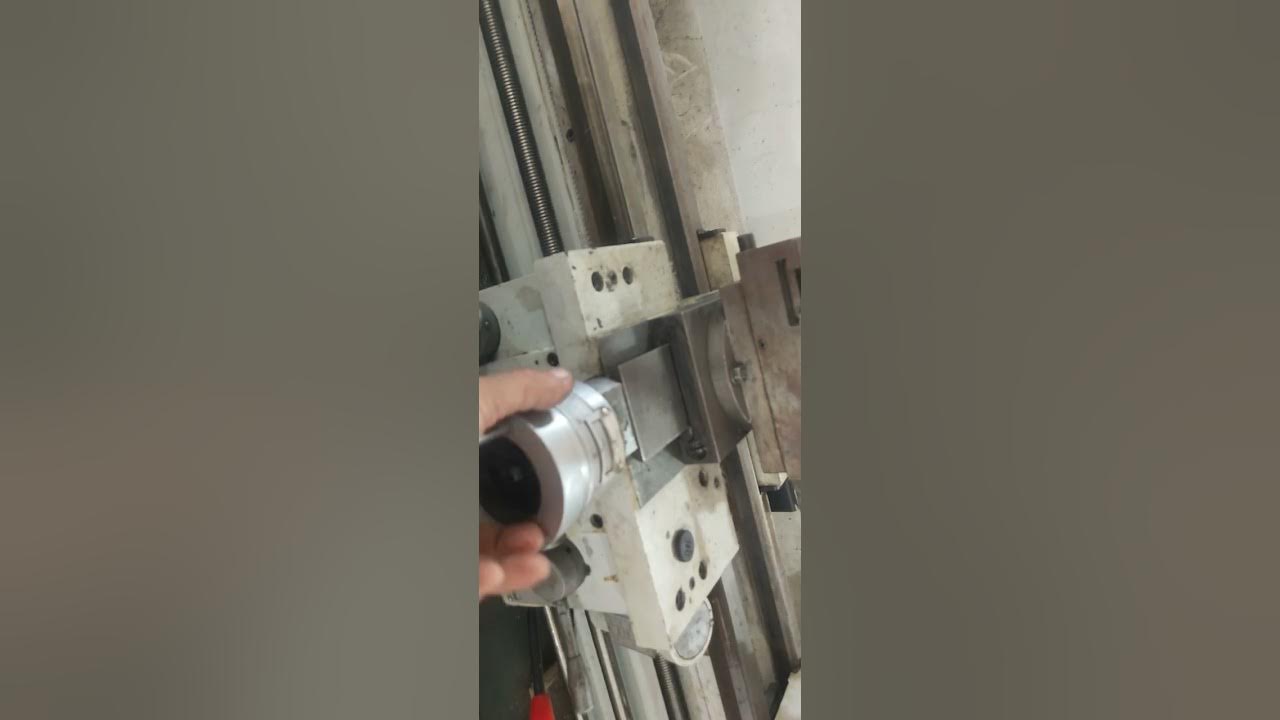Introduction to the Tool Room Lathe Video
Summary
TLDRThis video provides an in-depth overview of a tool room lathe, specifically the Hardinge lathe used at UST's machine lab. The video explains the major components, including the headstock, bed, quick-change gearbox, and tailstock, detailing their functions in producing round parts, threads, and drilled holes. It also covers the carriage, which holds the cutting tool, and explains the Z and X axes for precise tool movements. Power feed mechanisms, the digital readout system, and controls for spindle speed and threading are also discussed, showcasing how the lathe can perform various machining tasks with precision.
Takeaways
- 🔧 The video introduces the major components of a Hardinge tool room lathe located in the machine lab at UST.
- 🔩 The lathe is used for making round parts with varying diameters, threads, and for drilling and boring holes.
- 🏗️ The headstock is a casting that supports the spindle, which must rotate accurately for precise work.
- 🔄 The quick change gearbox on the back of the headstock allows for thread cutting with precise control over the carriage movement.
- 🛠️ The carriage carries the cutting tool and moves along the Z-axis, towards or away from the headstock.
- 📏 The lathe has two primary axes of movement: Z for tool movement towards or away from the spindle, and X for tool movement towards or away from the part's centerline.
- 💼 The ways are precision-machined and made of precision-grade steel to support the carriage's movement.
- 📍 The tailstock can hold a drill chuck and be positioned along the ways to drill holes through a revolving part.
- ⚙️ Levers on the carriage engage a power feed mechanism for consistent feed rates during machining.
- 📊 A digital readout displays the carriage's movement on both X and Z axes, allowing for precise adjustments and measurements.
Q & A
What is the primary purpose of a tool room lathe?
-The primary purpose of a tool room lathe is to produce precision round parts, including tasks like cutting different diameters, creating external and internal threads, and drilling or boring holes to specific sizes.
What is the function of the headstock on a lathe?
-The headstock houses the spindle, which rotates the workpiece. Its purpose is to support the spindle and ensure precise rotation to produce accurate work.
What role does the bed of the lathe play?
-The bed is a larger casting that supports the entire structure of the lathe. It ensures stability and alignment, enabling accurate movement of components like the carriage.
How does the quick change gearbox assist in lathe operations?
-The quick change gearbox allows for precise control of the carriage movement and is essential for cutting threads on parts. It ensures accurate synchronization between the carriage and spindle.
What is the carriage, and what is its function on the lathe?
-The carriage holds and moves the cutting tool along the Z-axis. It is responsible for carrying the cutting tool towards or away from the headstock, enabling machining operations on the workpiece.
What are the two axes involved in a standard lathe, and how do they function?
-A standard lathe operates on two axes: the Z-axis, which moves the cutting tool towards or away from the headstock, and the X-axis, which moves the tool towards or away from the centerline of the spindle.
What is the purpose of the tailstock on a lathe?
-The tailstock can perform various functions, including holding a drill chuck to drill holes through a rotating part. It can be positioned anywhere along the way and locked into place to support drilling or other operations.
How does the power feed mechanism improve lathe operation?
-The power feed mechanism allows for automatic movement of the carriage along the Z or X axis, eliminating the need for manual operation. It ensures consistent feed rates relative to spindle rotation, improving precision.
What is the digital readout used for on the lathe?
-The digital readout displays the movement of the carriage in both the X and Z axes. It allows operators to set zero points and track precise movements, ensuring accurate sizing of the final product.
What do the levers on the lathe control?
-One lever is used to turn the spindle on and off, selecting between high and low range. Another lever engages the carriage for cutting internal or external threads.
Outlines

Cette section est réservée aux utilisateurs payants. Améliorez votre compte pour accéder à cette section.
Améliorer maintenantMindmap

Cette section est réservée aux utilisateurs payants. Améliorez votre compte pour accéder à cette section.
Améliorer maintenantKeywords

Cette section est réservée aux utilisateurs payants. Améliorez votre compte pour accéder à cette section.
Améliorer maintenantHighlights

Cette section est réservée aux utilisateurs payants. Améliorez votre compte pour accéder à cette section.
Améliorer maintenantTranscripts

Cette section est réservée aux utilisateurs payants. Améliorez votre compte pour accéder à cette section.
Améliorer maintenant5.0 / 5 (0 votes)






